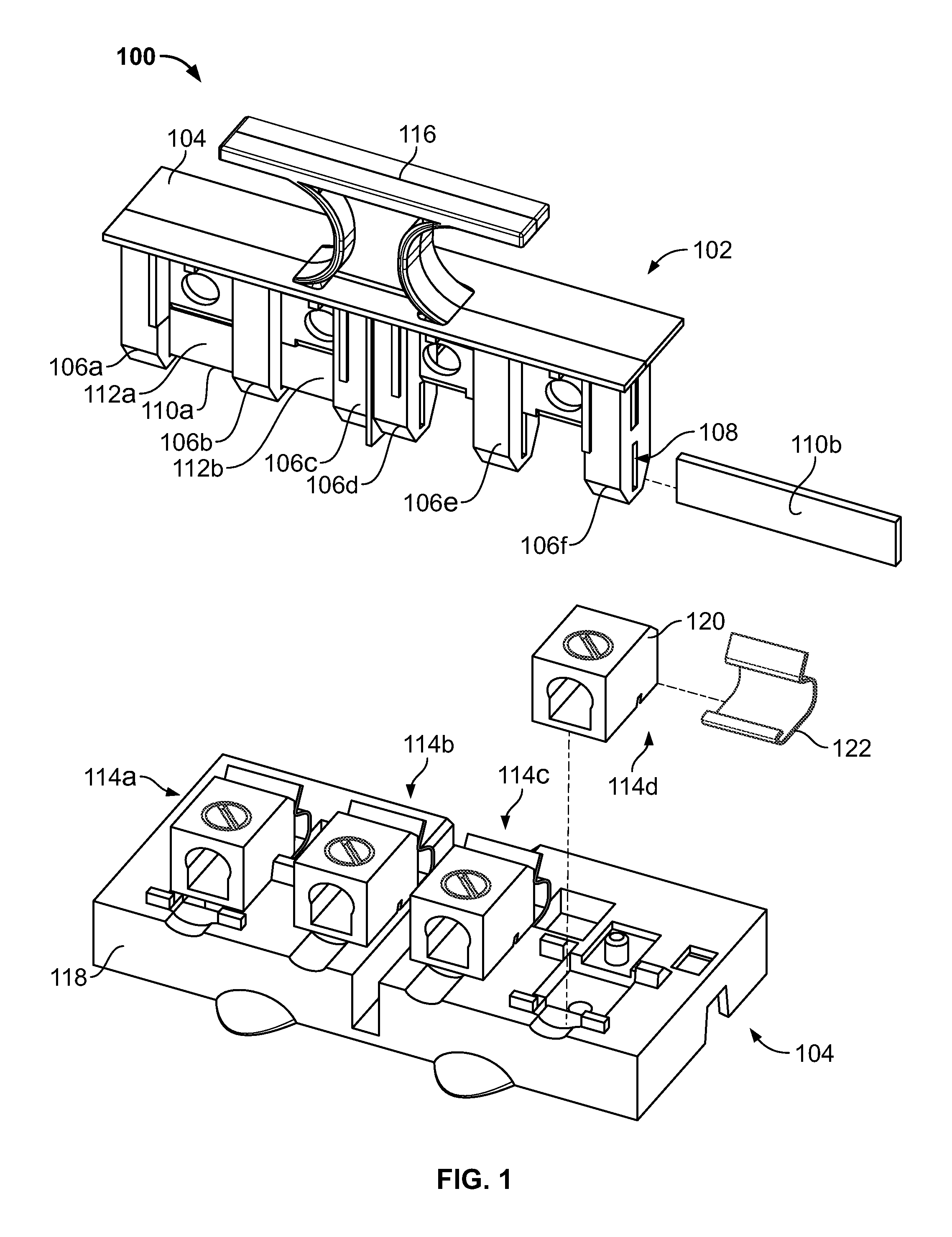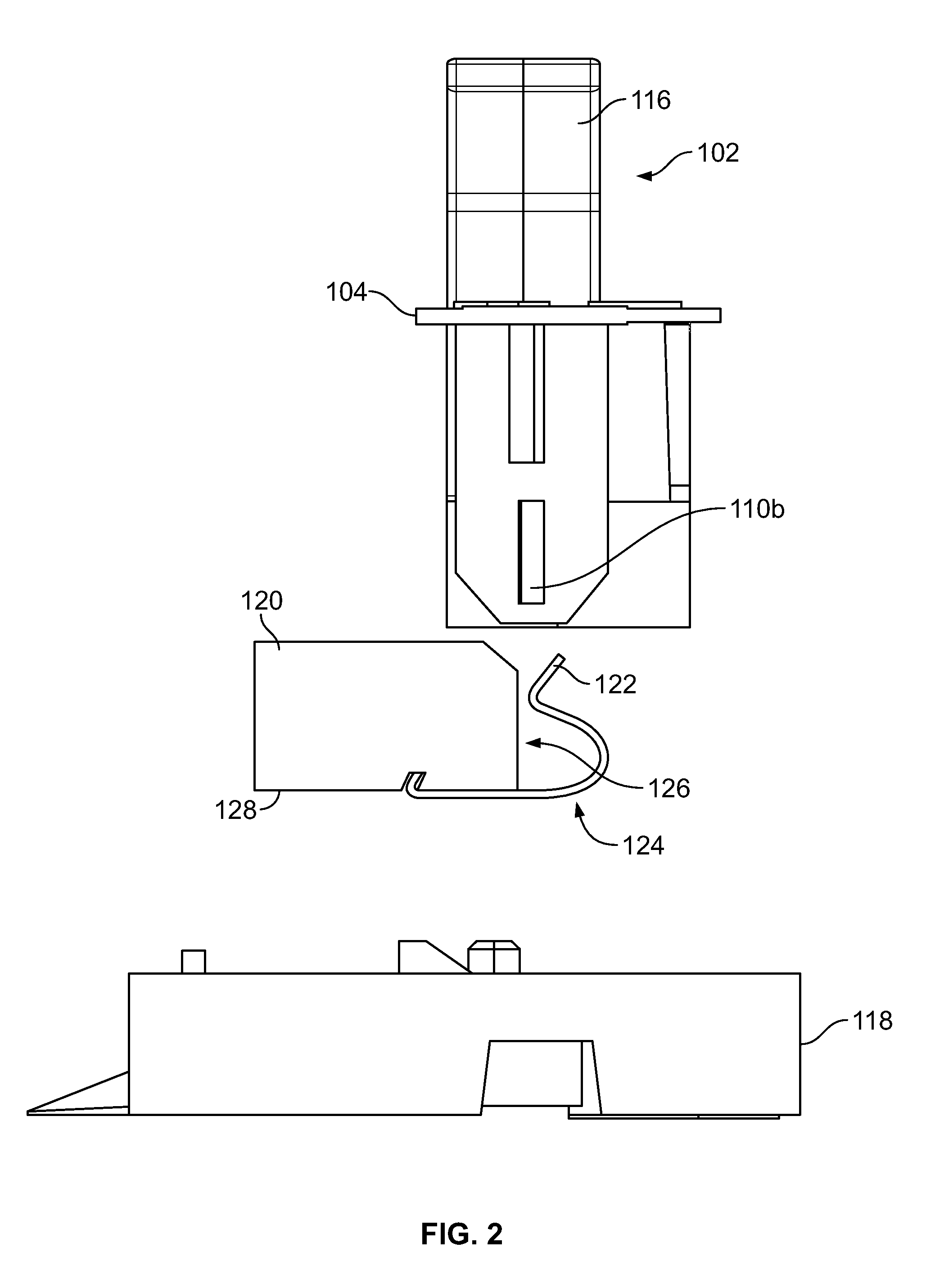Lug-jaw for electrical joint
a technology for disconnecting assemblies and electrical joints, which is applied in the direction of coupling contact members, coupling device connections, emergency protective devices, etc., can solve the problems of high cost of copper, excessive use of prior-art systems of too many parts, and high cost of copper. , to achieve the effect of less copper, less expensive copper conductors, and less sharp transitions
- Summary
- Abstract
- Description
- Claims
- Application Information
AI Technical Summary
Benefits of technology
Problems solved by technology
Method used
Image
Examples
Embodiment Construction
[0014]FIG. 1 is a partially exploded, isometric view of a disconnect assembly 100 according to an aspect of the present disclosure, for making and breaking an electrical connection to an electrical circuit (not shown) to which the assembly 100 is connected. The assembly 100 includes a pullout assembly 102 and a base assembly 104. The pullout assembly 102 is composed of a non-electrically conductive material, such as plastic, and includes blade-receiving extensions 106a-f that extend away from the face portion 104 as shown. Each of the blade-receiving extensions 106a-f includes a corresponding channel 108 (only one channel is numbered for clarity). The assembly 100 further includes a pair of flat blades 110a, 110b that are slidably received within corresponding channels 108 of the blade-receiving extensions 106. One of the blades 110b is shown removed from the channels 108 of the blade-receiving extensions 106d-f in FIG. 1 to illustrate how it is slid into the pullout assembly 100 vi...
PUM
 Login to View More
Login to View More Abstract
Description
Claims
Application Information
 Login to View More
Login to View More - R&D
- Intellectual Property
- Life Sciences
- Materials
- Tech Scout
- Unparalleled Data Quality
- Higher Quality Content
- 60% Fewer Hallucinations
Browse by: Latest US Patents, China's latest patents, Technical Efficacy Thesaurus, Application Domain, Technology Topic, Popular Technical Reports.
© 2025 PatSnap. All rights reserved.Legal|Privacy policy|Modern Slavery Act Transparency Statement|Sitemap|About US| Contact US: help@patsnap.com



